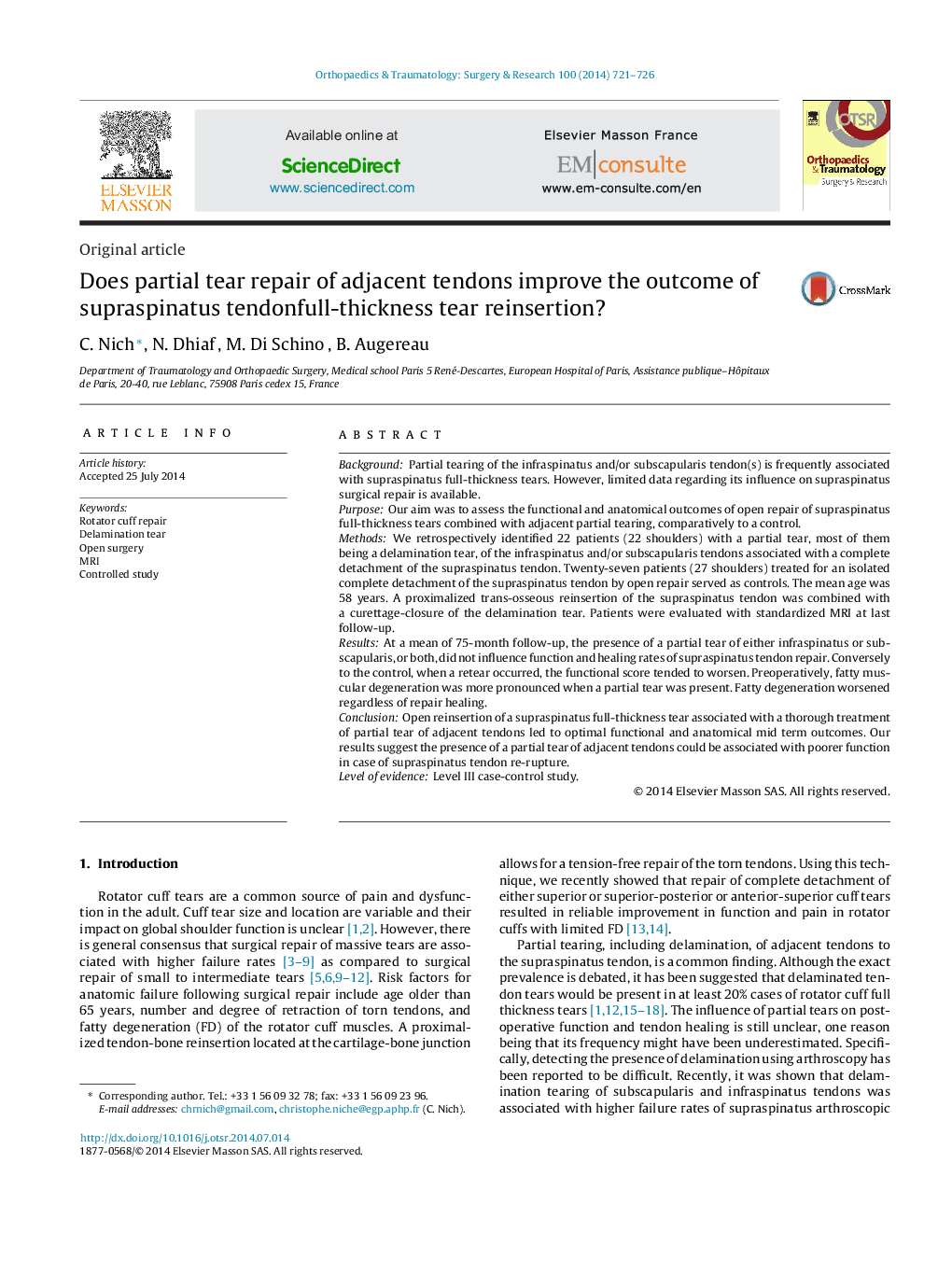| کد مقاله | کد نشریه | سال انتشار | مقاله انگلیسی | نسخه تمام متن |
|---|---|---|---|---|
| 4081402 | 1267591 | 2014 | 6 صفحه PDF | دانلود رایگان |

BackgroundPartial tearing of the infraspinatus and/or subscapularis tendon(s) is frequently associated with supraspinatus full-thickness tears. However, limited data regarding its influence on supraspinatus surgical repair is available.PurposeOur aim was to assess the functional and anatomical outcomes of open repair of supraspinatus full-thickness tears combined with adjacent partial tearing, comparatively to a control.MethodsWe retrospectively identified 22 patients (22 shoulders) with a partial tear, most of them being a delamination tear, of the infraspinatus and/or subscapularis tendons associated with a complete detachment of the supraspinatus tendon. Twenty-seven patients (27 shoulders) treated for an isolated complete detachment of the supraspinatus tendon by open repair served as controls. The mean age was 58 years. A proximalized trans-osseous reinsertion of the supraspinatus tendon was combined with a curettage-closure of the delamination tear. Patients were evaluated with standardized MRI at last follow-up.ResultsAt a mean of 75-month follow-up, the presence of a partial tear of either infraspinatus or subscapularis, or both, did not influence function and healing rates of supraspinatus tendon repair. Conversely to the control, when a retear occurred, the functional score tended to worsen. Preoperatively, fatty muscular degeneration was more pronounced when a partial tear was present. Fatty degeneration worsened regardless of repair healing.ConclusionOpen reinsertion of a supraspinatus full-thickness tear associated with a thorough treatment of partial tear of adjacent tendons led to optimal functional and anatomical mid term outcomes. Our results suggest the presence of a partial tear of adjacent tendons could be associated with poorer function in case of supraspinatus tendon re-rupture.Level of evidenceLevel III case-control study.
Journal: Orthopaedics & Traumatology: Surgery & Research - Volume 100, Issue 7, November 2014, Pages 721–726